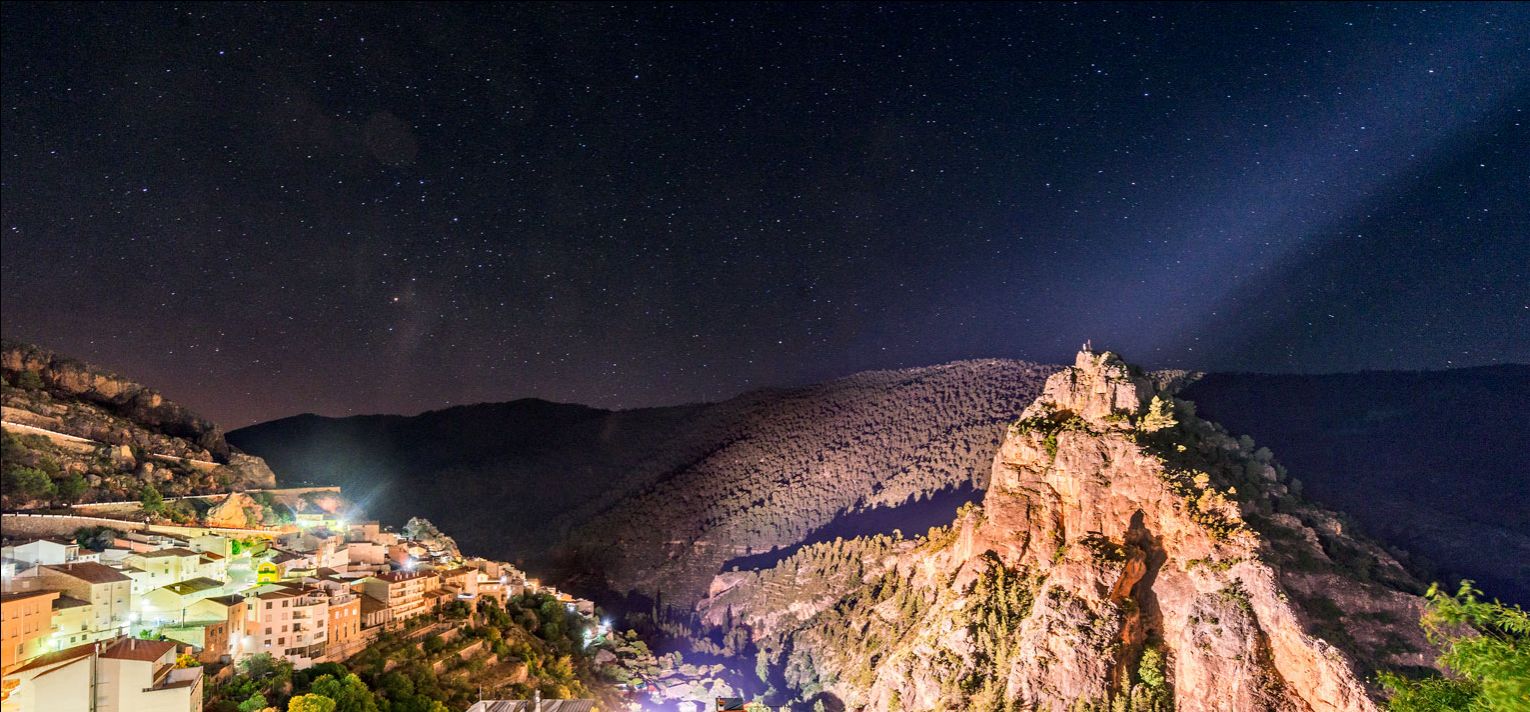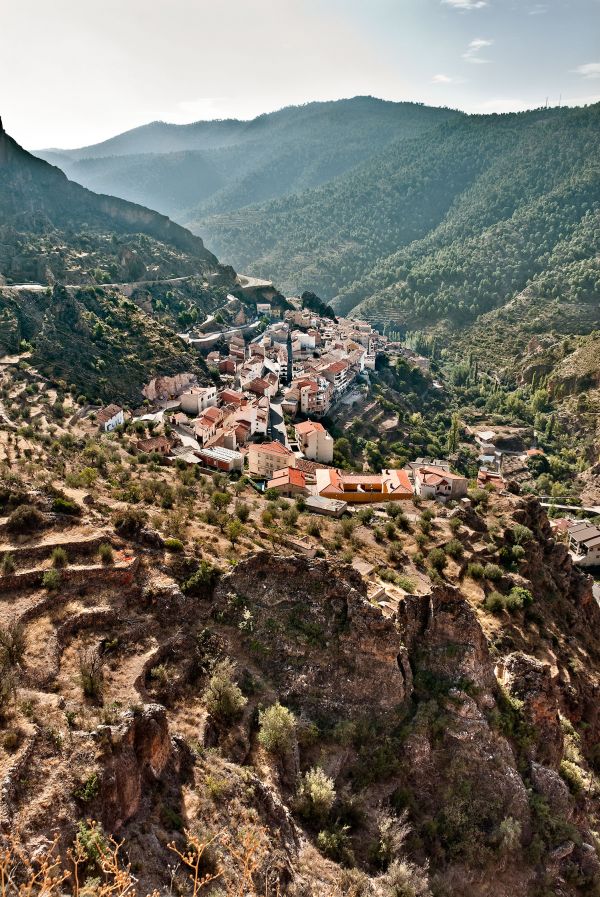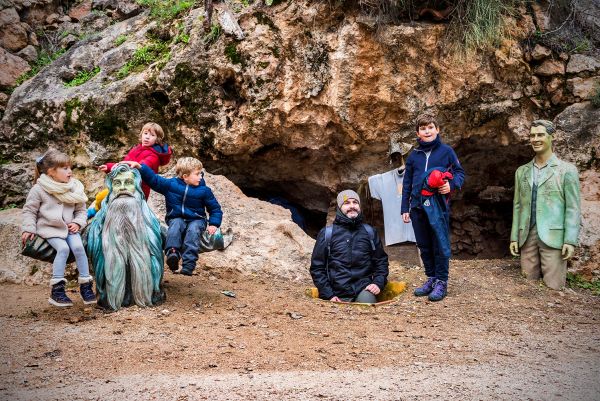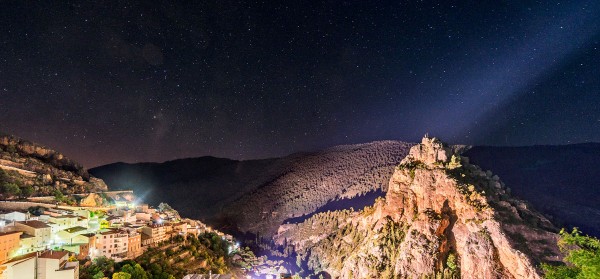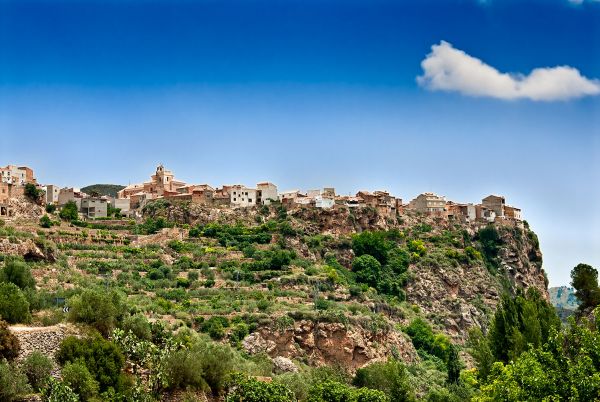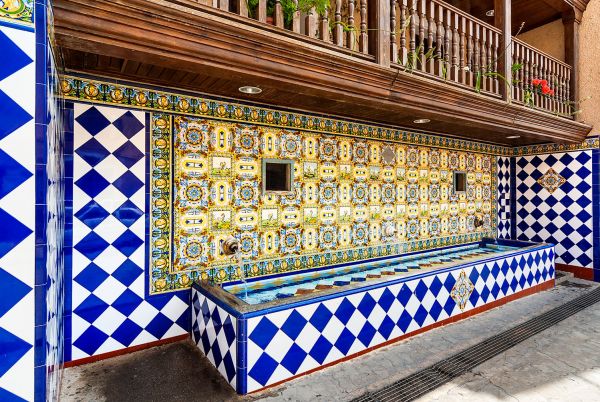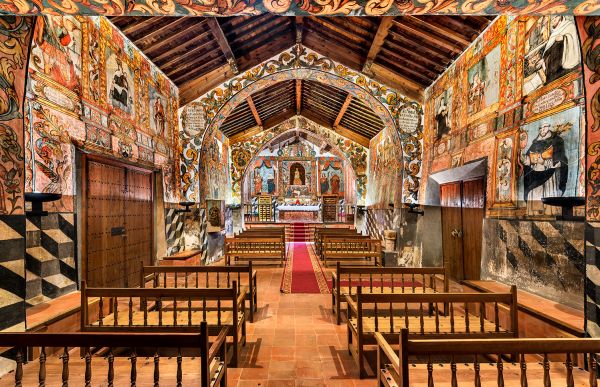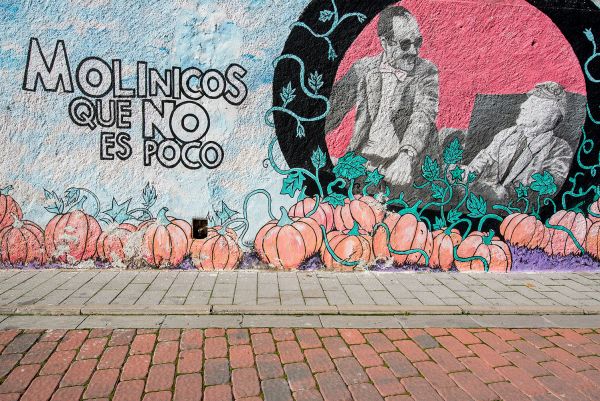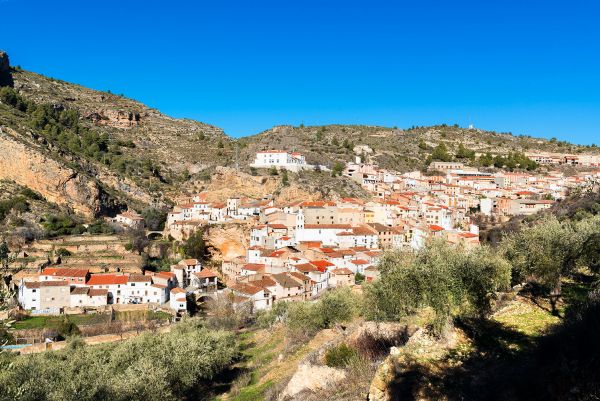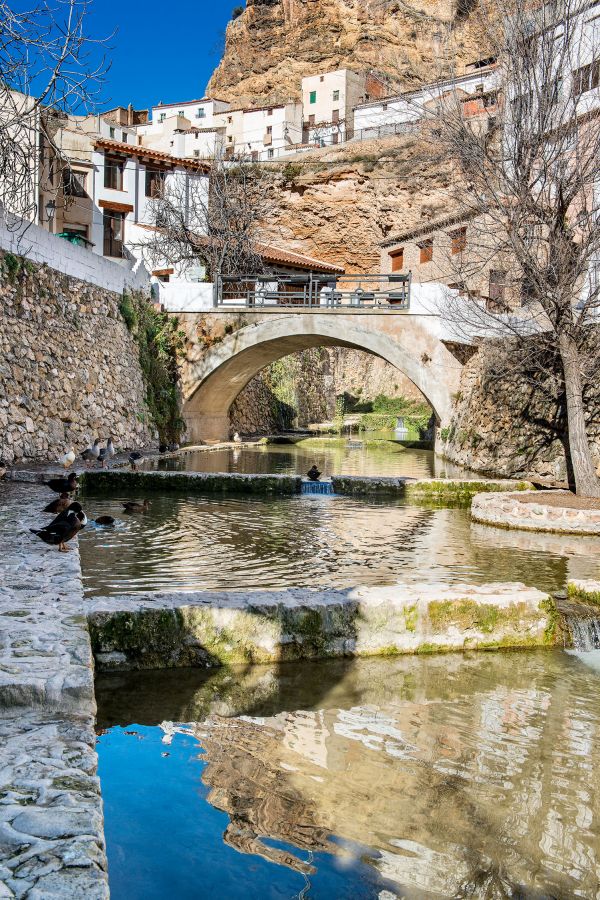Through the Swiss La Mancha: Ayna, Liétor and Molinicos
Albacete
The sights witnessed from the car window during the journeys are more than worth the time invested. The walks and stops we suggest will help visitors to discover places worthy of a movie setting: and not in vain, these towns were the location for the cult film “Amanece, que no es poco” and several visits mention José Luis Cuerda’s work.
Our first stop is Liétor, considered one of the region’s prettiest towns, which seemingly hangs over the Mundo River valley. The natural setting is undeniably beautiful. There are three lookout points in the Moorish quarter that allow better understanding of the place we’re in. We recommend visiting the Pilancón lookout point.
However, Liétor also has a rich cultural heritage. During our stroll, the Pilar fountain in the main square catches the eye, as do the several stately homes dotted around the town, the parish of the Apostle James, a sombre temple with baroque features including a noteworthy baroque altar in the Espino chapel and its dome; the old convent of the Carmelite friars of San Juan de la Cruz, with a cloister with painted decorations. Next to the convent, we find the former El Ramblón washing area: it’s interesting to see the sinks where clothes were washed in the water from the stream that crossed the city until quite recently.
Lastly, don’t miss the unique Belén chapel, declared a National Heritage Site, with ingenous, colourful murals considered the finest collection of popular 18th-century painting in Spain.
Our next destination is Ayna.
Ayna is set in one of the most evocative and picturesque locations in Castilla-La Mancha. It is known as the La Mancha Switzerland: the town is nestled in the gorge of the Mundo river, in the Gargantón stretch, opening on to a natural rock balcony. The surrounding area features imposing rocky outcrops, abundant vegetation, snow in winter, a thousand colours in autumn, vegetables growing in terraces climbing up the mountain, water, the fertile river banks - a real paradise uncovered.
The whole picture is nicely visible from the Devil’s Lookout Point (Mirador del Diablo), 1.5 km from Ayna on the road driven from Albacete. This vantage point allows us to see, on the left, one of the region’s most important areas for climbing.
A little lower, inside the town, on the bend called “Rodea Grande”, other large lookout point and the sidecar from the film “Amanece, que no es poco” offer a more detailed view. In the town itself, we’ll come across more film settings, such as the men’s terrace, uncle Pedro’s garden and where Elena walks to the terraces.
When exploring the town’s streets, we’ll discover surprising hidden corners. The town’s appearance is somewhat special: a labyrinth of narrow, stepped streets with bends, nooks and crannies to adapt to the terrain, and homes with white façades. We recommend entering the Chapel of Our Lady of Los Remedios. possibly a Jewish synagogue located on Calle Mayor whose main artistic attraction is the wooden Mudejar roof. The Parish Church of Nuestra Señora de lo Alto is located in the area known as Postigo. Nearby, we can admire the small Chapel of las Cabrillas. The remains of the Yedra Castle occupy a rocky outcrop with a natural entrance currently called the “Cave of the Moors”, which dominates the valley in both directions.
From Anya, we take the road to Molinicos. After a few kilometres, we can stop in the hamlet of Royo Odrea, a small, picturesque village. Upon returning to the road to Molinicos, we come across the Infiernos Lookout Point: in addition to the town and the crag surrounding it (called “La Peña”), we can see the course of the Mundo river and how this creates a canyon and eye-catching waterfalls.
Molinicos is located where two streams - Pardal and Fuente-Higuera - meet. Its town centre is a web of steep, narrow streets with a highland feel. Crowned to the south-east by the Perico crag –an outcrop with symbolic importance for local residents– the old town of Molinicos has two parts, upper and lower, separated by a spectacular ravine. The noteworthy difference is the type of construction and the aesthetics: one modern, the other old and rural.
We recommend starting at the top, first on Calle Mayor in the modern area, then work your way down, to the older part, where the streams meet. We’ll pass by the new town hall building, the modernist Church of Carmen, and reach the main square - in the old town, a unique, whitewashed space featuring the old town hall and surrounded by numerous legendary movie settings. The square contains Níscalo’s House, one of Spain’s few mycology museums, and the only one in Castilla-La Mancha.
However, perhaps Molinicos’ main attraction is down here; not inside the city centre, but on the outskirts, brimming with water and vegetation. The Molinicos aqueduct is at the end of Calle Molinos, on the Morote stream, and was used to supply water to the area’s various mills. Don’t forget that most of the municipal area of Molinicos is inside the Calares del Mundo y de la Sima Natural Park, meaning this town has great natural heritage.
May also be of interest to you
Castilla-La Mancha Tourism in 2023. All rights reserved.

 365
365
